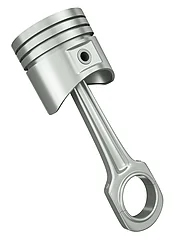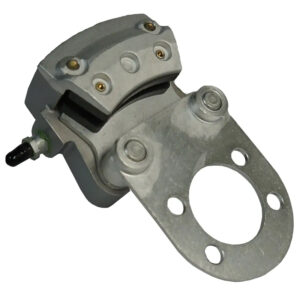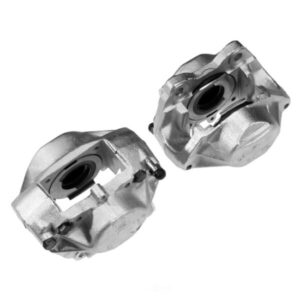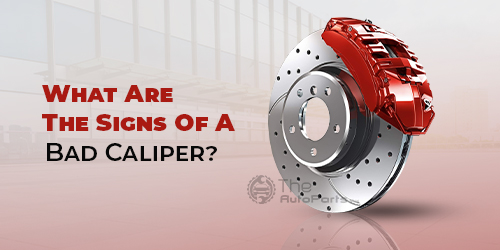The car’s braking system is incomplete without the most crucial component, the brake calipers. Brake calipers are responsible for squeezing the brake pads against the rotor that halts the car or helps it move. It is impossible to remain safe while driving in case of a problematic brake caliper, and seeking assistance from the qualified technicians who would perform brake caliper replacement near me would fix the problem in no time.
Parts of a Brake Caliper
Caliper isn’t just a single entity but an entire assembly with parts such as Adapter, Cylinder Bore, Piston Seal, Dustboot, etc. Let’s have a look at each of these parts along with their functionality:
Adapter
The adapter is also known as the supporter or hanger. It is attached to the caliper assembly and is attached to the steering knuckle using bolts and handles the entire braking load.
Cylinder Bore
The piston motion takes place within the cylinder bore. Therefore, the size and number of the cylinder bore depend on the size and number of pistons.
Piston

The movement of brake pads towards the rotor has only been possible due to the piston. The piston size depends on the braking force applied to the car. The braking force of a bigger piston is equivalent to the braking force of two small pistons.
Piston Seal
The piston seal, also termed as Piston ring, is responsible for keeping the brake fluid behind the brake pads.
Dust Boot
Dust boot hinders the entry of dust inside the cylinder bore.
Pins and Bushes
The caliper is mounted on pins and bushes. In the case of a floating caliper, it works side to side.
Positioner
The positioner generally lies between the pins and bushes. It holds the caliper externally or during pedal release so that the brake shoe outside moves away from the disc. It bends and closes up the moment brake pads undergo wear and tear.
You may face issues while stopping the car in case there are issues in any of these parts. Unfortunately, the only way to fix these issues is by taking the car for a brake caliper replacement to the mechanic.
Types of Brake Calipers
You would generally come across two main forms of brake calipers. Let us go through each one of them in detail:
Floating Calipers

Floating calipers move inside and outside relatively with the rotors and are connected to two pistons present on the inboard side of the rotor. The moment the entire caliper is pushed
Fixed Calipers

Fixed calipers have pistons present at the opposite sides of the rotor. Preference is given to the fixed ones and is quite expensive than the floating category of calipers. Certain high-performance calipers have two or more pairs of pistons present on either side of the rotor, and many of them have six pairs in total.
Signs of a Problematic Brake Caliper
Usually, the brake calipers are meant to last for a lifetime. However, things don’t work the way we expect. Below are the signs of a problematic brake caliper that you must know about:
Vehicle Moves to the Either Side of the Road
Do you feel that your car starts moving to either side of the road while in motion? It is possibly due to a problematic brake caliper. The brake caliper consists of pistons that move in or out the moment you apply hydraulic pressure to the cylinder. Debris accumulation or corrosion leads to piston failure; the pads fail to release or remain in contact during such situations. In such cases, the car starts moving to the side from where the caliper is damaged. These things take place in normal scenarios, and those with sound technical knowledge can perform DIY brake caliper replacement to resolve the issues in no time.
Squealing or Metallic Rubbing Sounds from the Car
At times the sounds start coming from the problematic part. You would face issues while driving in case the caliper is the root cause of the issue. On the contrary, Once the driver applies brakes, the car produces sounds in case of issues. Taking the car to the mechanic for a brake caliper replacement can help you get rid of them in no time.
Unequal Wearing of the Brake Pads
Some of you would notice that either side of the brake pads is thinner than the other one. Take the car to the repair shop and fix the issues in no time.
Leaking Brake Fluid
Modern braking systems operate on hydraulic pressure. If the drivers notice an oily spot on the ground. It is not due to a problematic caliper. It is better to get in touch with a qualified technician to fix the issue.
Clunking Sounds Coming Out of the Car
These issues are less common than other ones. The bracket that holds the brake caliper is problematic. It is generally the broken bracket that produces loud clunking sounds. Driving must be strictly prohibited in such cases as it would lock the brakes completely and determine the brake caliper cost before replacing the faulty one with a new one.
How Much Does Brake Caliper Cost?
Enter the make, year, and model of the car to get an idea of the kind of brakes you need. The average brake caliper replacement cost starts from $150 and escalates up to $900.You can buy the one with a lower cost that falls between $200-$500.In case you own a luxury car, the cost would surge to $500 or more. The bigger the car brand, the more will be the cost of the caliper. You can save money by purchasing the caliper from a trusted store such as ‘The Auto Parts Shop‘ that brings top-quality parts to you and insert them by watching the DIY brake caliper replacement videos or tutorials.
The Bottom Line
Issues with the brake pads must be resolved as quickly as possible. Leaving them unattended would put others’ lives at risk. Consult a qualified mechanic or perform the DIY brake caliper replacement if you know the technicalities of the job.
